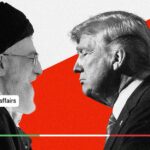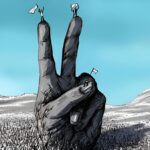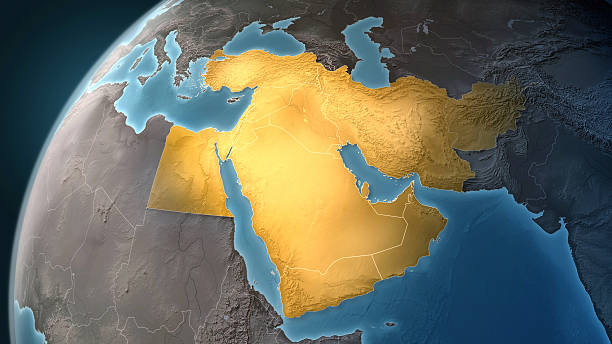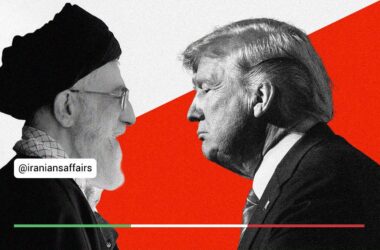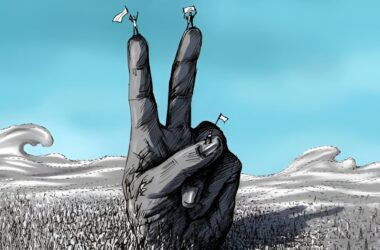Peace in the Middle East, which was once optimistically perceived within the framework of the Abraham Accords, has now reached a critical impasse: Arab countries are unable to effectively address the waves of dissent within their societies, which are becoming increasingly prone to radicalization. Over time, a segment of Israel’s opposition in the West has also become more susceptible to engaging in radical activities. The motivation resulting from the October 7 attack has opened Pandora’s box.
The purpose of writing this article is not to fearmonger but to critique the failed policies of the past few decades.
The issue is not that peace is not a solution and that military actions must be taken. War is a bitter and inevitable consequence of a series of events that have piled up one after the other. A set of crises that could easily have been foreseen converge at a critical point and lead to an explosion. Now everyone is expressing concerns about the spread of violence in other parts of the world because the proliferation of war in the absence of political solutions is an unavoidable and, unfortunately, logical outcome.
Why have we reached this point? I see the reason for it, in brief, as the continual postponement of crises and deferring them to later. The Iran nuclear issue has reached a deadlock and it is entangled with the war of Russia against Ukraine, the United Nations Security Council lacks a clear function in the face of global crises, and it’s uncertain whether China is intervening in the Middle East, or it is the United States.
When the JCPOA (Joint Comprehensive Plan of Action) was signed in 2015, many saw it as the beginning of the normalization process for the Islamic Republic. However, it should be noted that the Islamic Republic does not consider itself a modern state and claims to transcend the order of nation-states. As a result, the sunset provisions, which were created with the expectation of the Islamic Republic’s normalization, were approaching, and tensions were rising.
When October came, (the time of the sunset provision), it was clear that Europe, America, the Islamic Republic in Iran, and Russia could not reach an agreement. As a result, it was predictable that tensions would increase. Right now, the tension between the United States and the Islamic Republic in Iran is intensifying beyond the scope of the Hamas-Israel conflict.
The West is perplexed because the reformists in Iran, whom they had repeatedly placed their hopes in, defended the attacks by Hamas and labeled it as genuine resistance. For Iranian protesters in 2023, who regarded the Islamic Republic as a totalitarian religious structure, this stance was not surprising.
The issue here is that the situations do not have quick and easy solutions: national states in the region need to strengthen, a peace process in Israel and Palestine must be established, semi-militant groups need to be disbanded and transformed into political parties, and, in general, the pursuit of conflicts should be addressed significantly more through political means rather than militarily.
It’s clear that the peace process has reached an impasse in Tehran. Without political change in Tehran, this cycle will not work. Inability to see this reality clearly has led to the specter of a very large regional war looming.
The Middle East is a place of both fear and hope. For Iranian protesters, a transition to peaceful methods with a political approach similar to what happened in South Africa is aspirational. However, it requires many fundamental diplomatic adjustments. Until recently, the West not only didn’t support political change in Iran but employed various methods to support the structure of the Islamic Republic. Adding to this, after the protests of the Mahsa/Jina movement, it wasn’t clear what approach they had towards the protesters. At times, Western political forces and media funded by Western governments accentuated forces that increased Iran’s society’s fear of post-Islamic Republic instability. As a result, the serious question arose whether the West intends political change or merely exerting pressure on the Islamic Republic to gain international concessions.
These policies need to change. Iranian protesters are critical of the entire regional policies of the Islamic Republic (and have expressed it numerous times), and they are concerned about universally accepted principles like “national sovereignty.” Nationalist movements in Iran over the past decade have aimed to establish a modern liberal state and replacing this modern national state, rather than the Islamic Republic, can preserve its security in various forms and reverse the destructive cycle of instability in the region.
Western policy in recent decades has been simplistic regarding peace in the region. While peace is possible, it primarily requires a reevaluation of all previous failed policies. In Iran, even though the ideology of the Islamic Republic’s totalitarian structure tends to push the situation toward war, citizens, economic activists, and even a significant portion of the military are not in favor of war. They continue to seek solutions that are not temporary and stopgap, which have repeatedly brought crises back to square one with even greater intensity over the past few decades.
The key to solving the problem may be found in strengthening the nationalist movements of the past decade that are striving for the establishment of a modern democratic state in Iran. Movements that simultaneously seek democracy, women’s and minority rights, and national sovereignty. Among Iranians, the phrase “the West is itself opposed to political change in Iran and the transition to democracy” is prevalent. This statement may seem strange considering the values of the democratic world, but it is likely the result of a misperception of the issue from the Western perspective.
